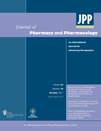Alternative therapeutic advantages of catfish bile on atopic dermatitis: protection of T cell-mediated skin disease via antioxidant activities
Abstract
Objectives In the present study, we aimed to examine the anti-atopic properties of bile from the cat fish, Silurus asotus, to determine its possible use as a pharmaceutical product.
Methods The anti-atopic activities of cat fish bile were examined in a non-cell antioxidant, in-vitro assay (splenocytes and mast cells) and a 2,4-dinitrochlorobenzene (DNCB)-induced atopic dermatitis-like mouse model.
Results The results of these experiments revealed that Silurus asotus bile (SAB) scavenges radicals and protects proteins from superoxide attacks, suggesting that SAB suppresses the T helper (Th) type 2-skewed immune response. Th1/Th2 mRNA cytokines (interleukin (IL)-2, interferon (IFN)-γ and IL-4) from mouse splenocytes were effectively inhibited, and the release of β-hexosaminidase in RBL-2H3 mast cells was significantly suppressed by SAB. These results were supported by screening the Th1/Th2 cytokine mRNAs (IL-2, IFN-γ and IL-4) from lymph nodes in DNCB-treated mice. More dramatic results were observed in the histological changes at higher SAB concentrations (5%) compared to the therapeutic control, visualized using hematoxylin–eosin (H&E) staining.
Conclusions The results presented in this study suggest that SAB may provide functional advantages with regard to treating atopic dermatitis because of its antioxidant and immune-suppressive effects.




